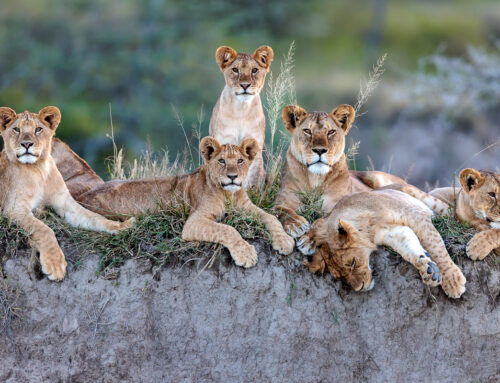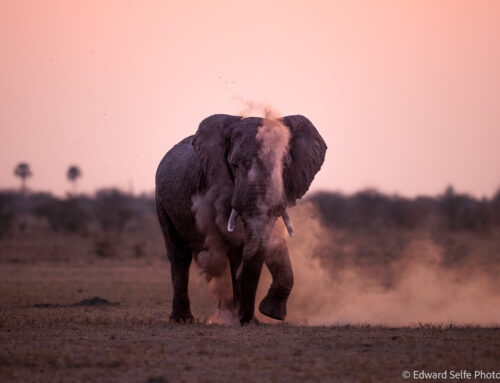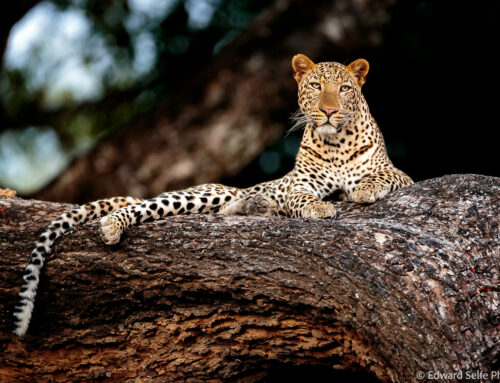All photographers go through a journey with their craft; while each person’s exact route might be slightly different, there are some features which are likely consistent with many.
When photographers start to take photos of wildlife, their early work is usually centred around getting photos of every species that they see, avoiding cutting off body parts if possible! With that achieved, the approach shifts towards sharper, better illuminated images of those same species. As camera skills improve, and the initial crazy excitement level of simply seeing these iconic species starts to pass, the attention turns to close-ups, abstract body part images and forays into black and white photography.
I remember it well! I too passed along that journey and I look back at it with nostalgia, and without judgment or ridicule. In fact, the excitement of seeing Nature’s big headliners (whether that’s elephants or predatory birds or penguins or bears) should be celebrated and nurtured, and not belittled in any way.
However, as that initial heart-pounding excitement of simply seeing wild creatures inevitably settles, safari goers tend to start to look more closely at their subjects, observing details, behaviours and subtleties which they had missed before. Photographers follow a similar path, during which they look more critically, watching for the right moment to take their shot, perhaps noticing the flick of a tail or the glint in an eye. Increasingly they are aware of the features of the image directly behind their subject and start to joke that “it’s a nice shot but it has a tree growing out of its head!”.
Spotting this proverbial tree is one of the advanced stages of the photographic journey. However, given the importance of the background (and by this I also include foreground and surroundings), it is amazing how long it takes us to start noticing, accommodating, and finally employing the background to maximise the impact of the image.
To take this concept to the extreme, we could consider that there is little to separate a portrait of a lion in a zoo from a portrait of a lion in the wilds of Zambia….except its surroundings. If we cut around the lion in two such images, it would be hard to separate them, and all sense of their place would be lost.
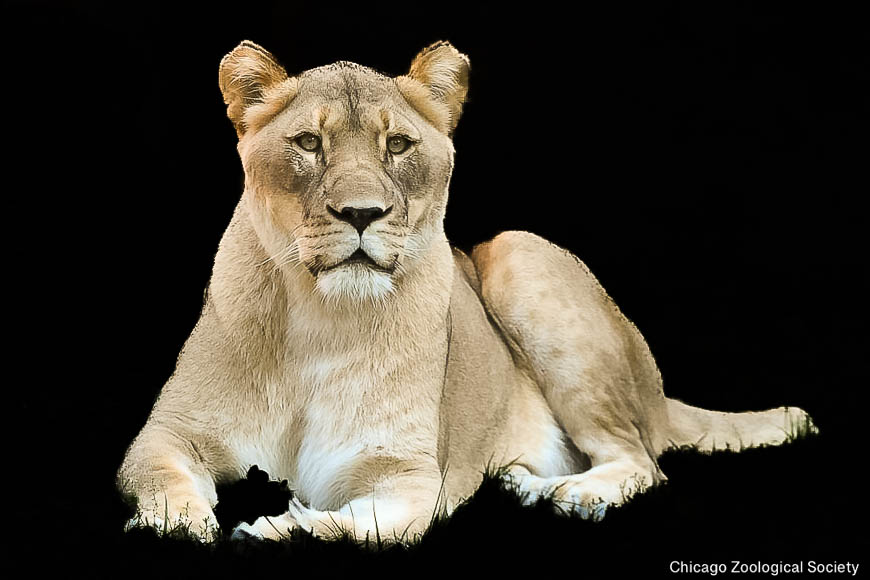
Ok, so anyone who knows about lions would be able to tell that one is a zoo lion and the other is a free-roaming wild lion…but you get my point!
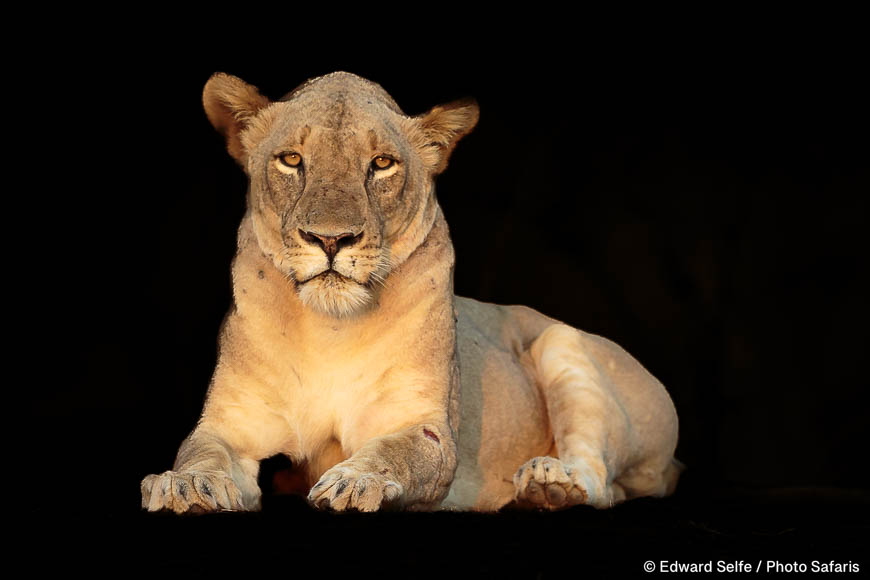
Backgrounds can certainly be distracting to the eye, removing attention from your intended subject, so working to minimise these distractions is a fundamental to improving all images. However, a well-selected background can dramatically improve an image, adding colour, texture, tone or a sense of place (or several of these) to the subject.
When guiding guests, I am constantly making decisions about how to approach or move around a sighting. My first interest is action: do I predict that there will be action, and if so, how do I get my guests in the right spot to capture it. It might be that the background and surroundings are not optimal, but we want to capture the action all the same.
Thereafter my concern is how to get the guests into the right position to photograph the subjects in the best way, considering the angle of the light, the likely movement of the animals and…..you guessed it, the surroundings and background. No everyone has very fast prime lenses which are able to blur the background dramatically and render it smooth, so these considerations are all the more important when we are using non-professional kit.
Sometimes, if a subject is moving, I might forego several photographic opportunities in favour of getting into a preferable position for a shot that will occur some time ahead. “Seeing” ahead and envisaging what the subject will look like against the surroundings through which it is moving is the challenge — and the reward — of wildlife photography, and particularly wildlife guiding. But it’s a gamble and I am happy to admit that some of my gambles don’t pay off and the animal moves away and doesn’t give us the shot that we wanted.
In the following images, I share the rationale behind the positioning for various shots and also show some examples of situations where it didn’t go to plan. In all cases, there’s a short story explaining the situation that led up to each scenario. I hope it’s helpful, but please add your comments below.
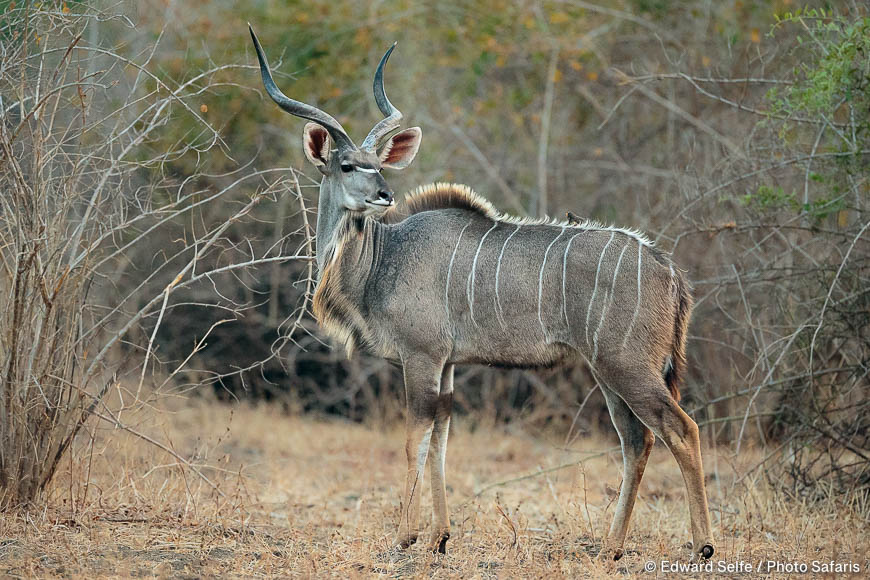
This is a nice, clear shot of a beautiful male kudu. They are notoriously shy in some areas so I was happy to get this clear shot, and of him looking to the side, rather than at me! The background is blurred because I was shooting from a low angle and using a long, wide-aperture lens, but the twiggy bushes behind make a “rough” background, of exactly the same colour as the subject, which does not show off the kudu at his best. Had there been better light on the subject, the tonal and colour separation would have made the image more pleasing.
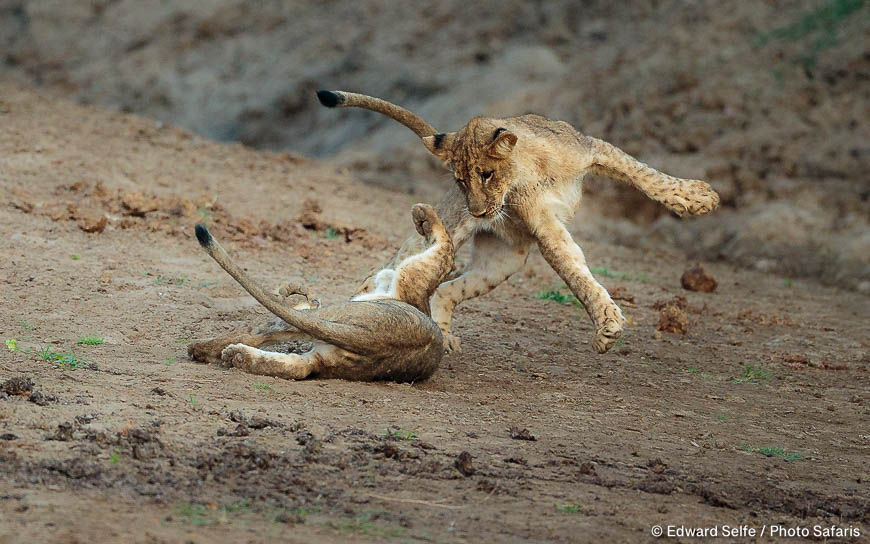
A wonderful action shot! These two lion cubs played for almost an hour early one morning in the Nsefu Sector. This was one of the first shots that we took of them, and I was very happy to get it. However, I was immediately looking for a better angle where we would be looking across or up at the lions (to make them appear larger) and also to separate the cubs from the brown bank which is almost the same colour as they are. In these situations, it’s a hard decision to make: do we move, risking missing the amazing action, or sit still and accept the sub-optimal background?!

Soon after the shot above was taken, the lions moved up on to the top of the bank of the same channel. Immediately the angle was better, and the mornign light was hitting them strongly. This allowed us a better angle, with a background that was more distant, and was of a complementary colour (green against the lions’ golden coats). It was also darker than the lions, making this female stand out beautifully.
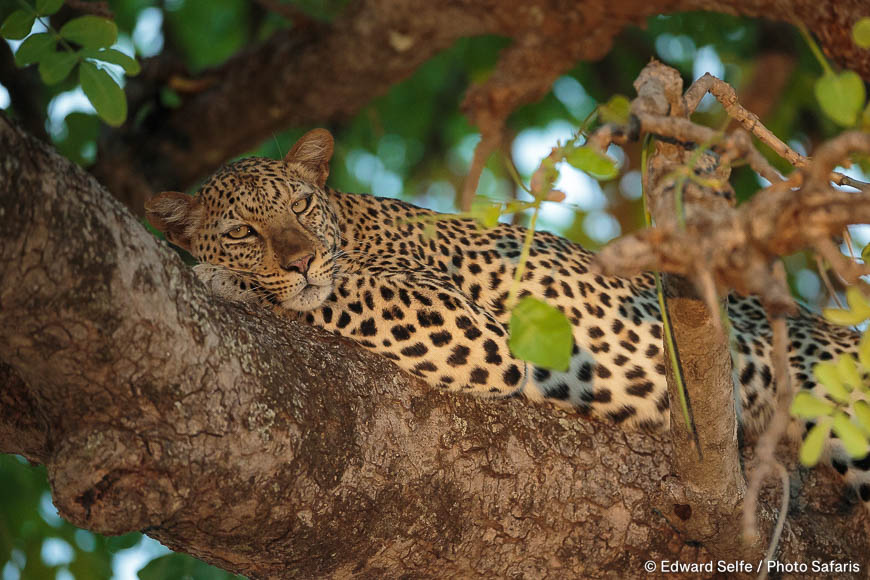
Who doesn’t love a leopard in a tree?! This female was stunning in the soft afternoon light of a September day. The catchlights in her eyes makes the image glow and the colours of the surroundings (browns, greens and yellows) work nicely with the orange of her coat. My angle, from the driver’s seat, meant that the branch above cut through her ear, whereas the guests behind me had her head framed in between the two.
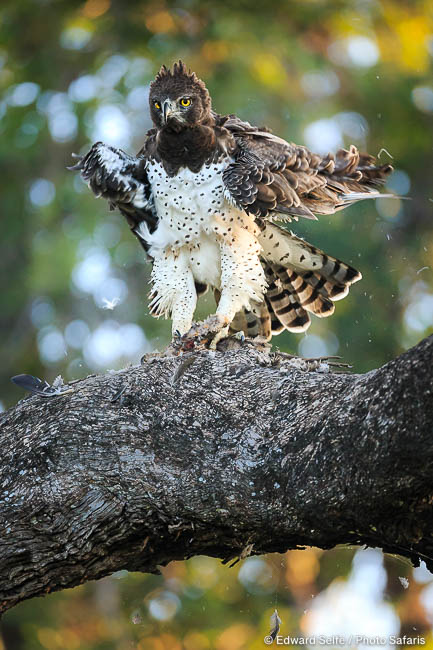
This martial eagle, shaking its feathers in the early morning, was in the shade of the canopy but the light was soft enough that the bright background colours did not overwhelm the subject. The combination of greens, yellows, blues and oranges works as a background and the highlight spots are diffused enough not to draw the eye away from the eagle’s eyes!
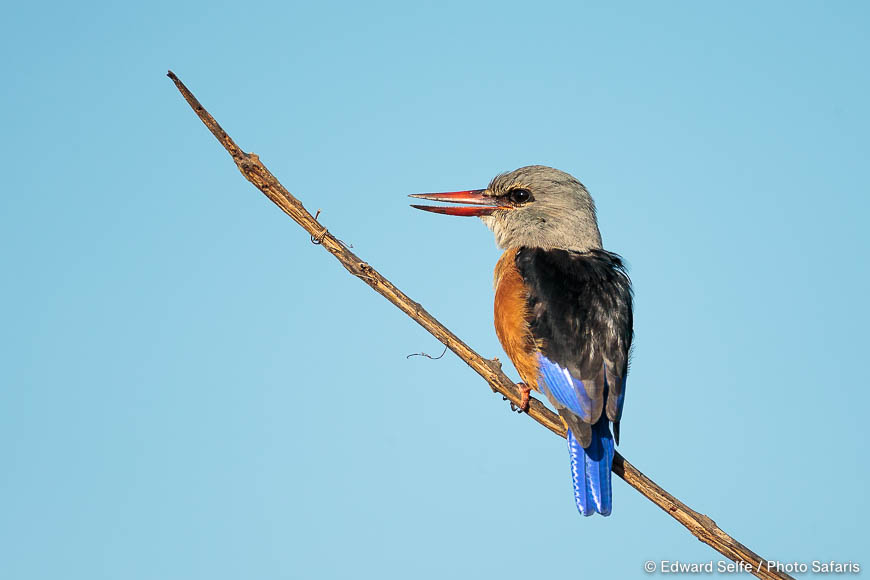
The blue sky background behind this grey-headed kingfisher is clean and non-distracting; but it adds nothing to the feel of the image and the colours are diminished by the bright blue surroundings.

The same subject, with better light, and with a soft green background that draws the eye towards the bright, colourful bird.

Two shots, a few seconds apart: the first with the leopard cub low down in the frame, with a branch emerging from its head….
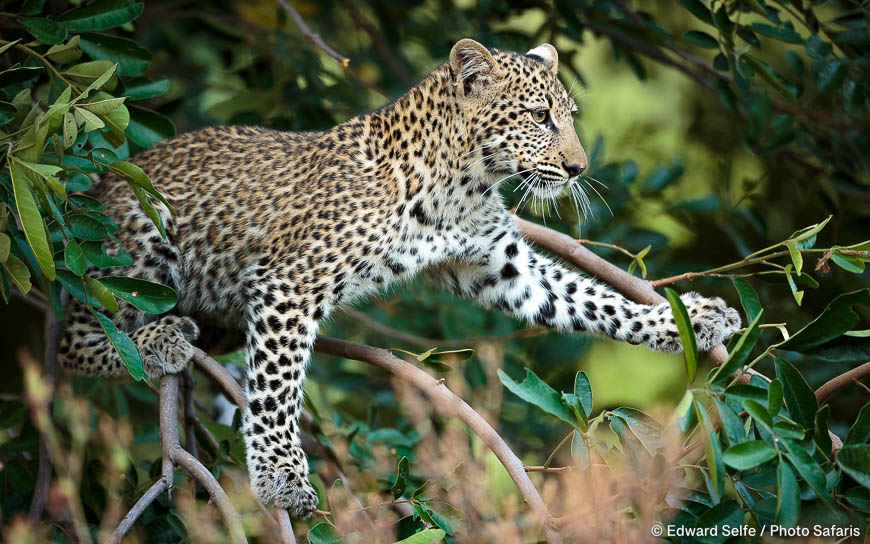
…and the second when the cub lifted itself up and rested a paw on the same branch. This makes all the difference to the composition and the quality of the resulting image.
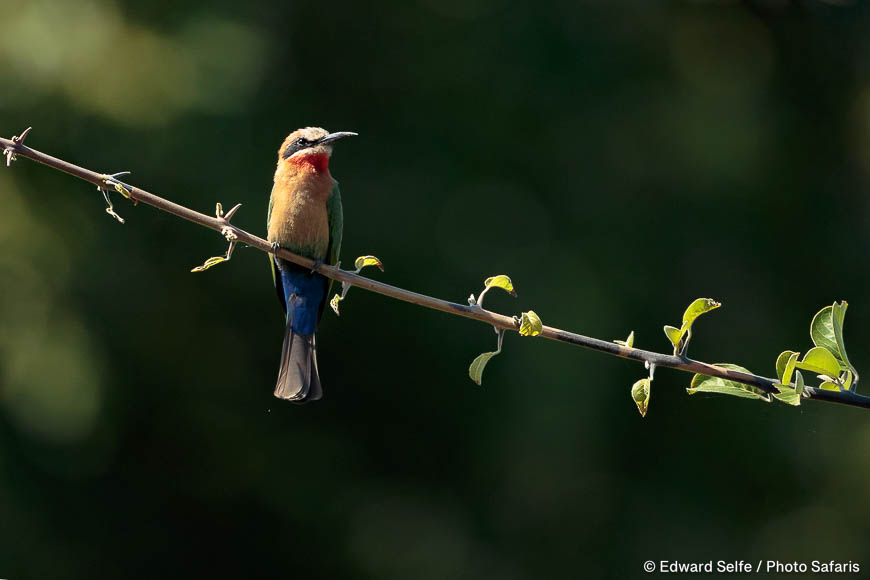
A strong spotlit effect, created by placing a well-lit subject against a shadowy background. Our eyes are always drawn to the brightest part of an image and this is the best background option to choose when the light is getting harsh later in the day.
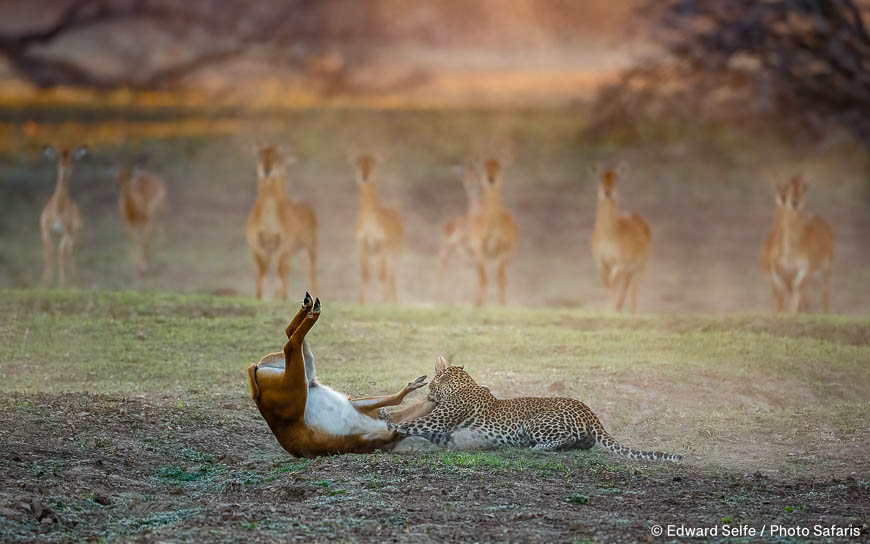
In the heat of the moment, it’s tempting to zoom in and take close ups of action situations such as this. But from this higher angle (where we were waiting to avoid disturbing the hunt) this would have yielded a sub-optimal image; but using a wider lens, and including the rest of the puku herd, and their reactions to the demise of their colleague, makes for a much more interesting image. The dust in the air only adds atmosphere to the result.
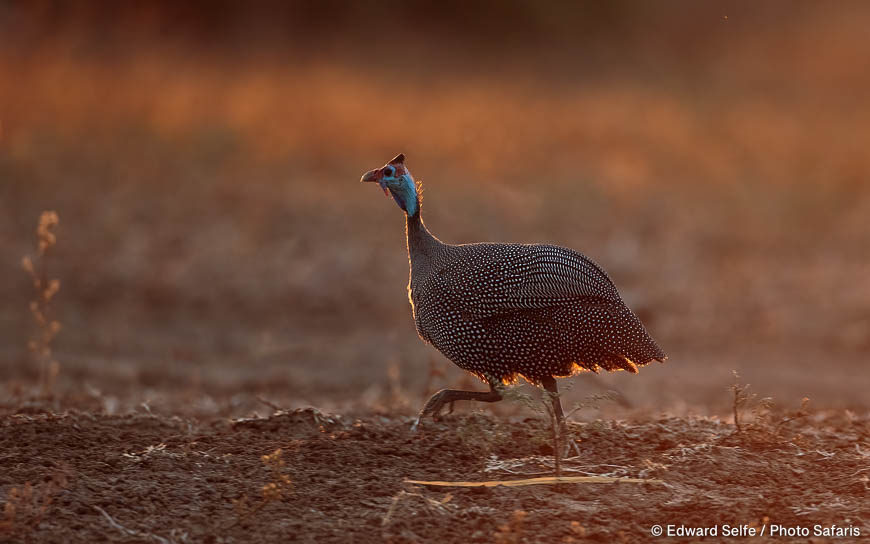
Guinea-fowl are small and fast moving. It’s crucial to get down to their level to avoid their spotty feather markings from blending with the ground below them. In this case, shooting against the setting sun, which makes the background orange, works beautifully in combination with the blue of their heads.

A remarkable action scene where a lioness faces off against a crocodile in a shallow lagoon. This is not a beautiful scene, but the action and reaction of the two predators makes the image, and the reflections in the water add value too. However, the contrast-heavy tree roots are very distracting and draw the eye away from the subjects, even though they are duller and less colourful. For viewers seeing this image for the first time, the extra time it takes them to work out what is going on reduces the image’s impact overall. Had it been possible to move one way or the other to remove the tree roots, this image could have been improved dramatically.
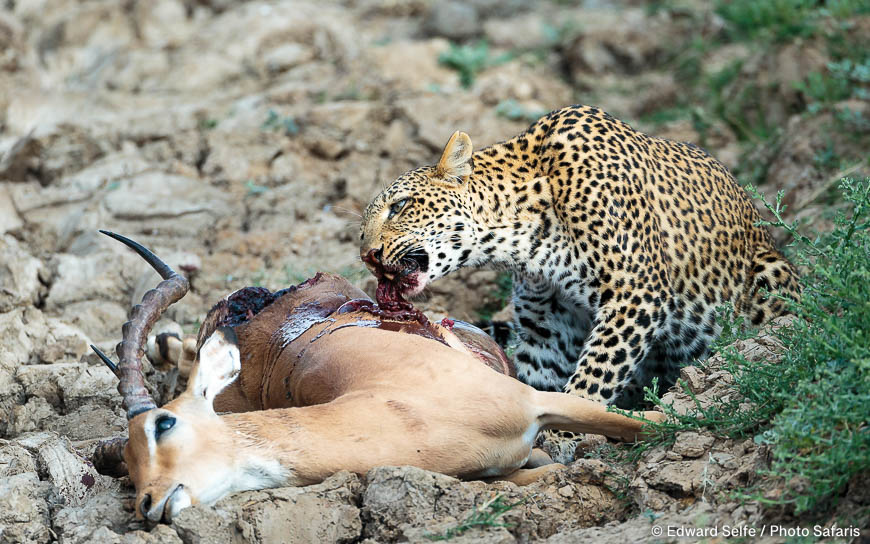
We found this leopard in a gully, feeding on an impala carcass. In these situations, we have few options for vehicle positioning as the topography often limits our view. However, one of my guests commented that the soft, overcast light meant that the scene was evenly lit and the awkward angle was negated.

However, another disagreed, saying that the soft light meant that the leopard’s coat blended with the cracked earth behind and it was harder to identify immediately what was happening in the image. They preferred when the sun emerged from behind the clouds, illuminating the subject and throwing the background into shade. This provides tonal separation between subject and background.
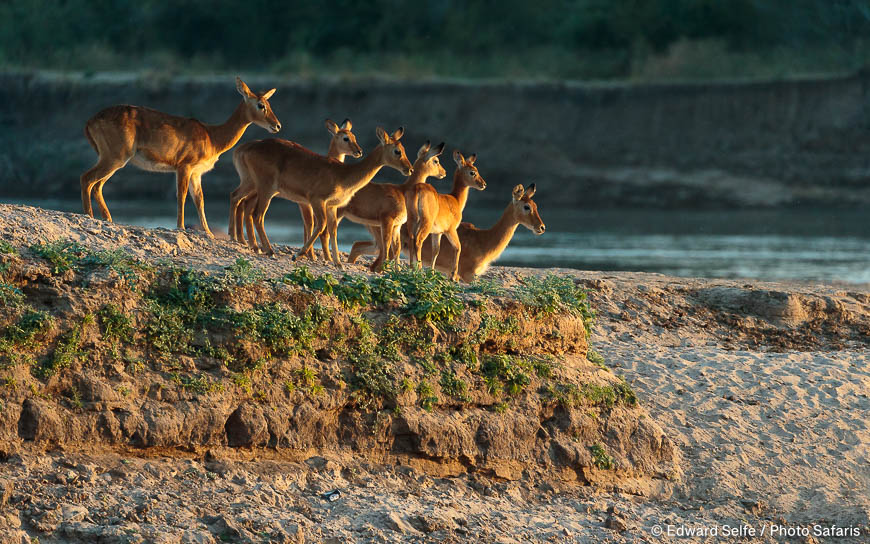
The beautiful light on these antelope is matched by the bank below. By getting low enough to place the subjects against the dark, shadowy bank behind ensures that they are the first thing that the viewer’s eye notices.
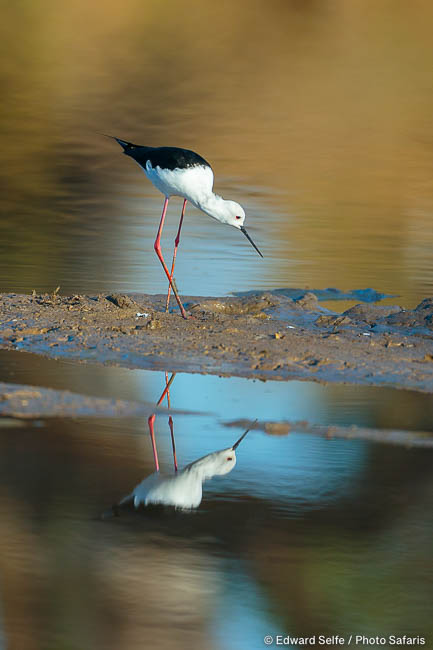
It’s generally accepted that waterbirds should be photographed from low down, ideally just above the water line. However, shooting from higher up allows the photographer to add colours in the background of the shot by choosing what should be reflected in the water around the bird. Here, I took care to make sure that the water mostly reflected the tree canopy to bring golden tones into the image; had the sky been reflected in the water, the image would have lost most of its impact.
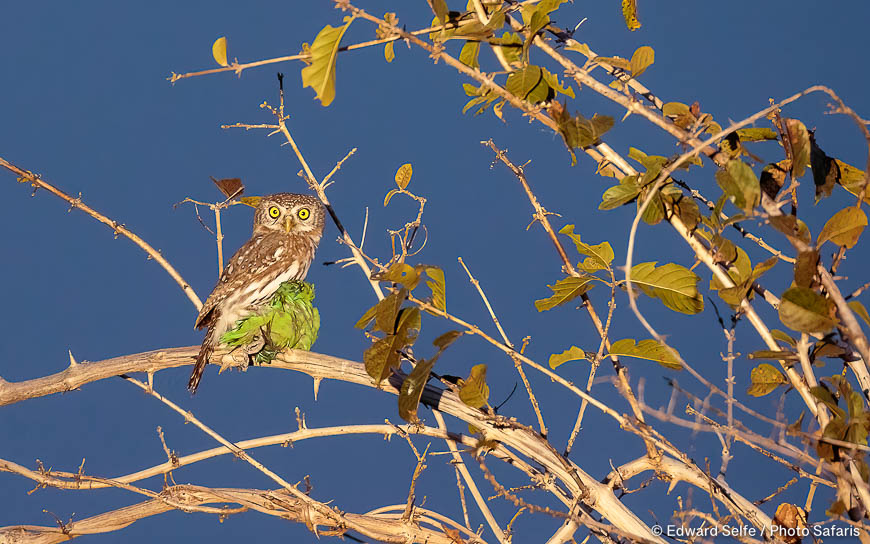
During the hour after sunset, there is a period of around 10 minutes where the brightness of the sky is matched by that of a spotlight; during this time, the warm light of the spotlight contrasts heavily with the blue light in the sky, giving beautiful backgrounds. If it doesn’t look like this be sure to adjust the white balance for the spotlight.
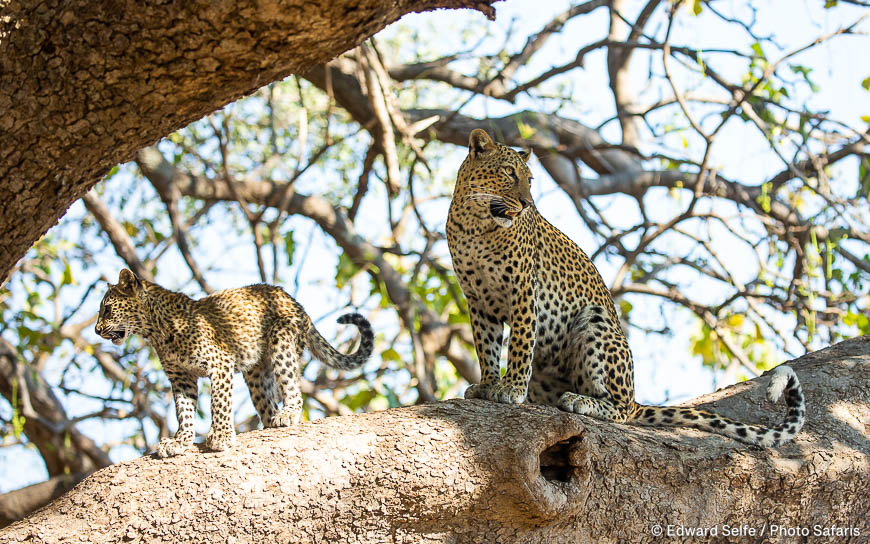
This wonderful scene was fantastic to watch but made for challenging photography; with no canopy of leaves behind the leopard and her cub, the bright sky shows through and almost wrecks the image — had this been any other subject, we would have declared this to be “harsh light” and moved on!
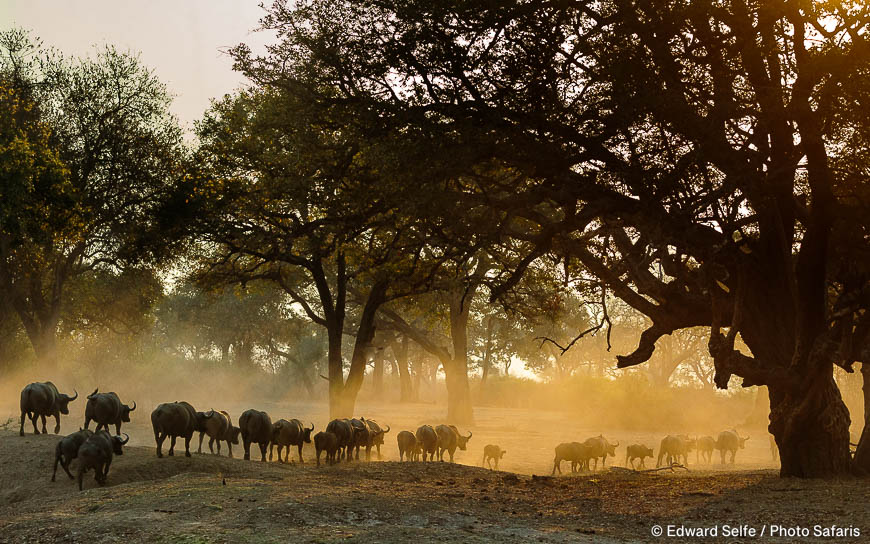
In this image, the dust acts as a crucial element in the frame, separating the buffalo (a dark, messy mass) from the bush line behind (a second dark, messy mass)! The bright yellow dust is key in allowing the viewer to see the shapes of the buffalo and distinguish them from the surroundings. Interestingly, I desaturated the yellows on Lightroom and the buffalo blended with the background, showing that it is the colour as well as the tone of the dust which is important.
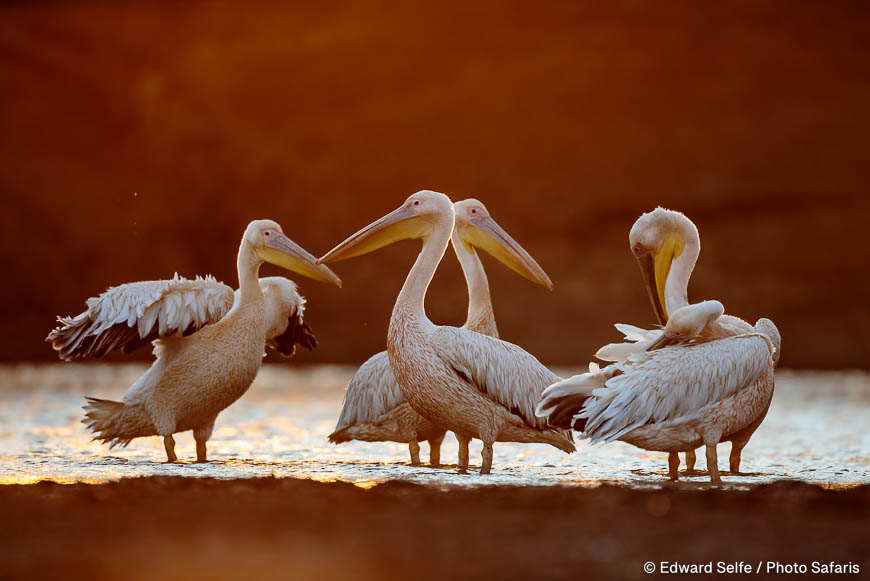
Shooting white birds directly into the sun is a challenging option, but I could see the colour created by the low, dusty sun that October afternoon. By getting low down, the birds are mostly against the red, dusty bank behind, rather than against the bright water, so they immediately catch the viewer’s eye.
Thank you for reading to the end! I hope that there has been some helpful information in this blog. Perhaps it helps you to consider the background more carefully in your own photos, but even if you are still at an earlier stage of your photographic journey, it may help to know what your photo-guide is thinking about when s/he says that s/he wants to move the vehicle to improve the shot!
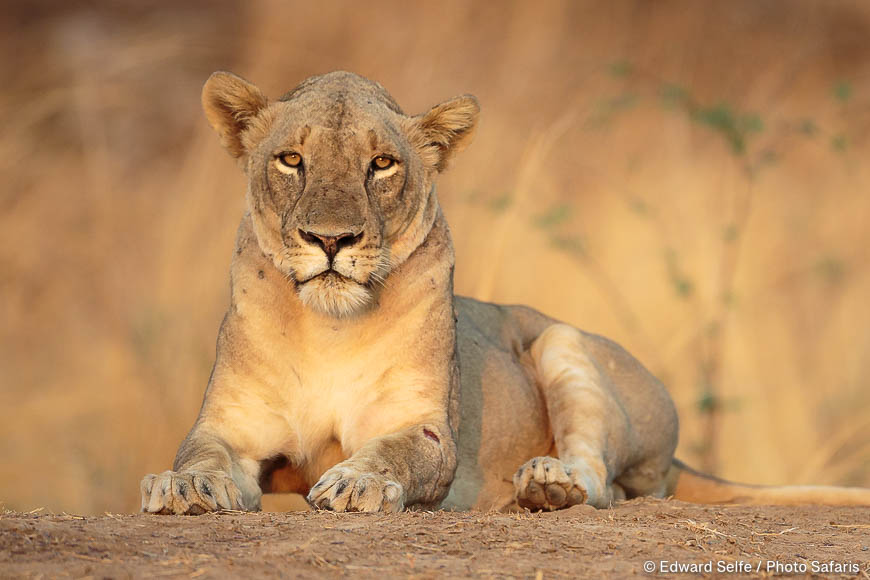
And, just to answer any queries above….here is the wild lion….
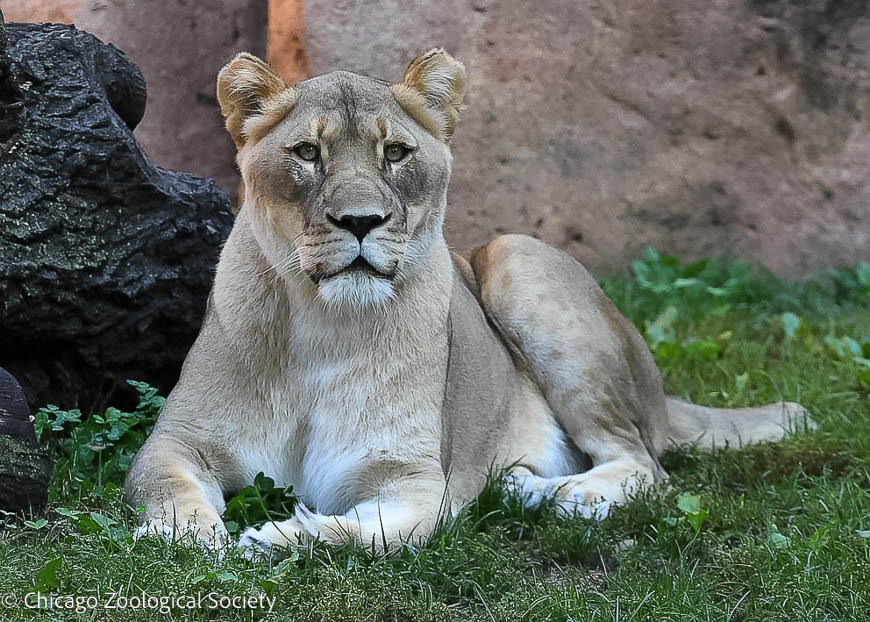
…and here is the zoo lion!!!

